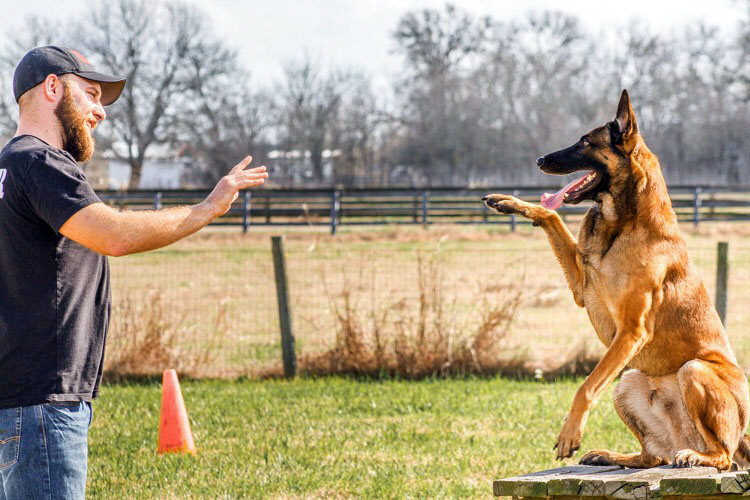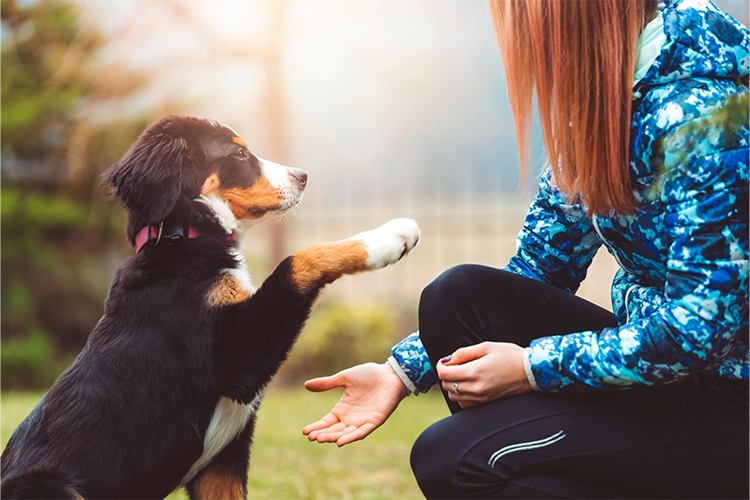Enjoyable Activities to Boost Your Dog Training Experience
Enjoyable Activities to Boost Your Dog Training Experience
Blog Article
Essential Tips for Successful Dog Training: A Guide for Animal Owners
Efficient canine training is a complex procedure that requires a strategic technique tailored to both the pet's personality and the owner's purposes. Recognizing exactly how to navigate these obstacles can considerably enhance the training experience, inevitably changing the connection between owner and dog.
Recognizing Canine Habits
Recognizing dog behavior is vital for efficient training and cultivating an unified partnership in between dogs and their owners. dog training. Dogs interact primarily via body language, vocalizations, and activities, making it critical for owners to translate these signals properly.

Socializing plays a considerable role in pet behavior; exposure to various settings, people, and various other pets can considerably affect a pet's personality. In addition, aspects such as type attributes and private temperament should guide training approaches, as some types may have specific behavior qualities that necessitate customized approaches. By understanding these components, proprietors can produce a helpful setting that motivates positive actions, bring about successful training end results and a deeper bond with their pet dogs.
Establishing Regular Commands
Efficient interaction with your canine starts with establishing regular commands. This foundational component of training is vital for fostering understanding in between you and your family pet. Consistency in the commands you make use of guarantees that your dog can dependably link particular words or expressions with the desired habits.
When picking commands, choose clear, distinctive words that are easy to separate and claim from one another. Prevent making use of similar-sounding commands that might perplex your dog. For instance, using "sit" and "remain" is ideal, yet "rest" and "struck" could cause misconceptions.
In addition, maintain the same tone and quantity for each and every command. Dogs are sensitive to vocal signs, so varying your tone can produce complication.
It is similarly vital to guarantee that all member of the family are on the same web page pertaining to the commands made use of. A united front in command use will certainly stop combined signals and strengthen the discovering process.
Favorable Support Techniques
The power of favorable reinforcement in dog training exists in its capability to encourage wanted habits through incentives and praise. This technique is based in the principle that actions complied with by favorable end results are more probable to be repeated. By including positive support right into your training regimen, you can effectively form your pet dog's behavior in a constructive fashion.
To execute positive support, it's vital to determine what motivates your pet, whether it be treats, playthings, or verbal appreciation. When your pet dog carries out a desired activity, such as resting on command, right away compensate them with a treat or affection. This organization between the command and the positive end result strengthens their understanding.
It's vital to timing the rewards properly; supplying the reinforcement within seconds of the wanted behavior assists your pet make the connection (dog training). In addition, uniformity is key-- make sure that all relative make use of the very same commands and benefit Look At This systems to stay clear of complication

Gradually, you can minimize the regularity of treats as your pet discovers the behavior, transitioning to applaud or intermittent benefits. This technique not just promotes a strong bond in between you and your canine however additionally advertises a favorable knowing environment, making training a pleasurable experience for both.
Socialization and Communication
Constantly subjecting your pet dog to a range of atmospheres, individuals, and other animals is crucial for their social advancement. Socialization must begin early, preferably throughout the essential window of 3 to 14 weeks, when puppies are most receptive to new experiences. Nonetheless, older dogs can also take advantage of ongoing socializing initiatives.
Introduce your dog to various setups, such as parks, pet-friendly stores, and urban areas. This exposure helps them adapt to numerous stimuli, lowering anxiousness and fear reactions. Encourage favorable interactions with various other pet dogs and people, making certain that these encounters are controlled and risk-free to promote confidence.
Use organized playdates with courteous pets, as this can enhance your canine's social abilities and teach them appropriate behavior. Obedience courses and training sessions likewise provide exceptional chances for socializing, enabling your dog to communicate with others in a monitored environment.
Display your pet's body movement during interactions, as this will certainly aid you assess their convenience degree. Progressively raise direct exposure to more challenging circumstances while making sure that each experience is favorable. A well-socialized pet dog is more likely to exhibit well balanced behavior, making them a delight to have in any type of setting.
Resolving Common Training Obstacles
Every canine owner will certainly encounter training difficulties at some time, no matter their pet dog's age or socialization degree. Identifying usual problems such as stubbornness, diversions, and fearfulness can aid in establishing effective strategies for renovation.

Distractions throughout training sessions can thwart emphasis. To combat this, begin training in a peaceful setting with marginal stimuli. Slowly introduce diversions as the pet comes to be much more proficient in commands. Short, constant training sessions are likewise effective in keeping attention.
Terror can prevent a dog's discovering procedure. Progressive desensitization to the resource of worry, coupled with positive reinforcement, can assist ease anxiousness. Persistence is important; never require a pet dog into a scenario that causes click here for more distress, as this may worsen the issue.
Eventually, understanding and addressing these common obstacles with an organized strategy will cultivate a much more efficient training experience, reinforcing the bond between pet and owner while advertising reliable learning.
Conclusion
In recap, successful canine training depends on an extensive understanding of canine behavior, the establishment of consistent commands, and the application of positive reinforcement strategies. Socializing plays a vital duty in developing well-adjusted pets, while addressing common training difficulties calls for patience and flexibility. By applying these important strategies, animal owners can foster a solid bond with their canines and promote desirable actions, eventually causing a harmonious partnership in between human beings and their canine buddies.
Understanding canine behavior is necessary for reliable training and promoting a harmonious relationship between dogs and their owners.Socializing plays a substantial function in pet actions; exposure to numerous atmospheres, people, and other pets can dramatically influence a pet dog's personality.The power of positive support in pet dog training exists in its capability to urge desired actions through benefits and appreciation. By including favorable support right into your training routine, you can successfully form your canine's actions in why not try here a constructive fashion.
In summary, effective canine training relies on a detailed understanding of canine actions, the facility of consistent commands, and the application of favorable support methods.
Report this page